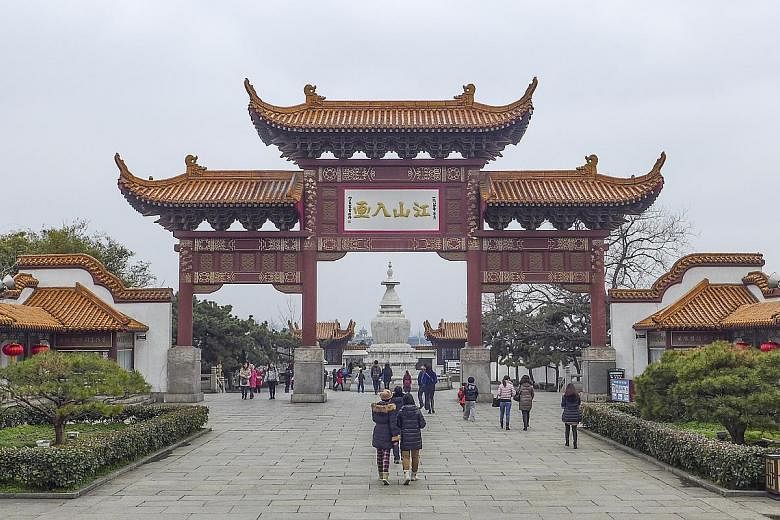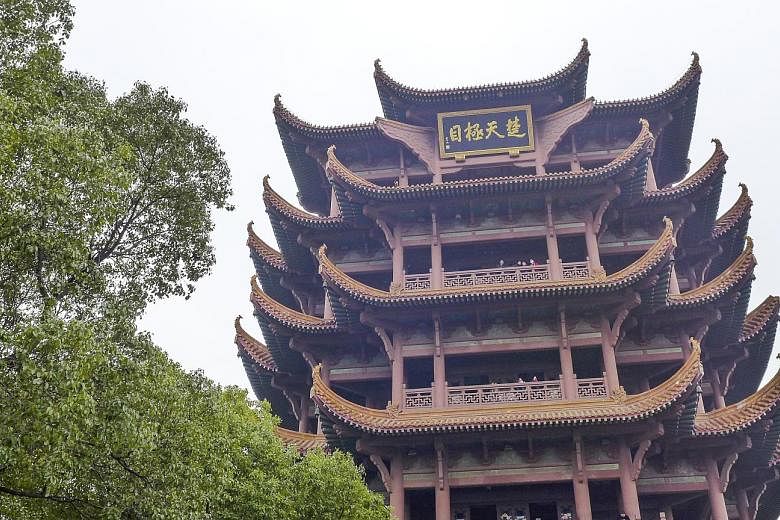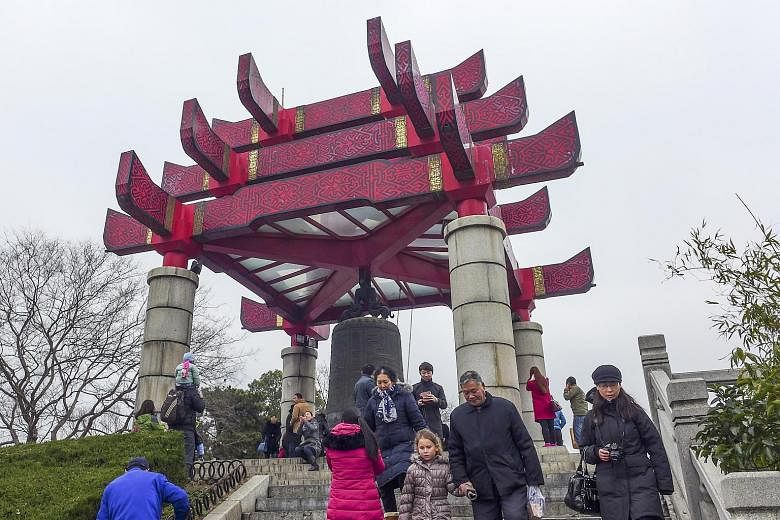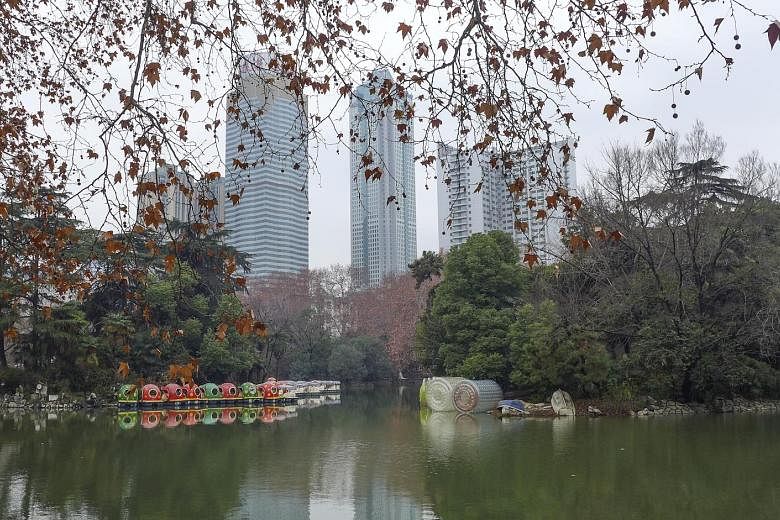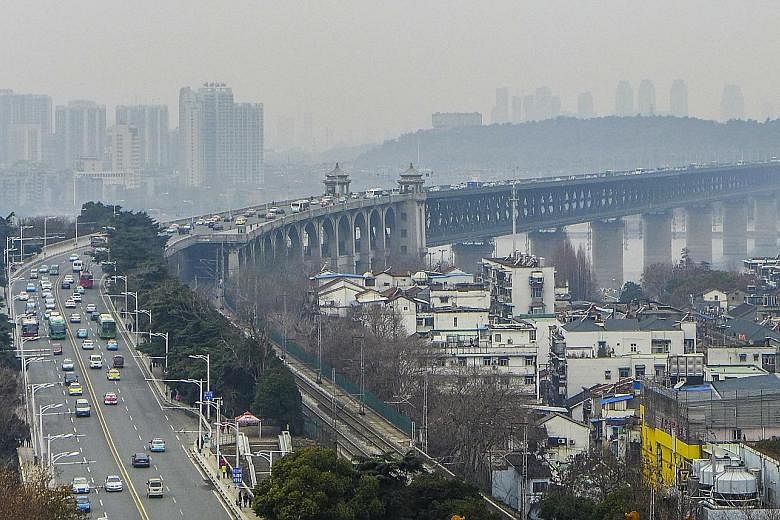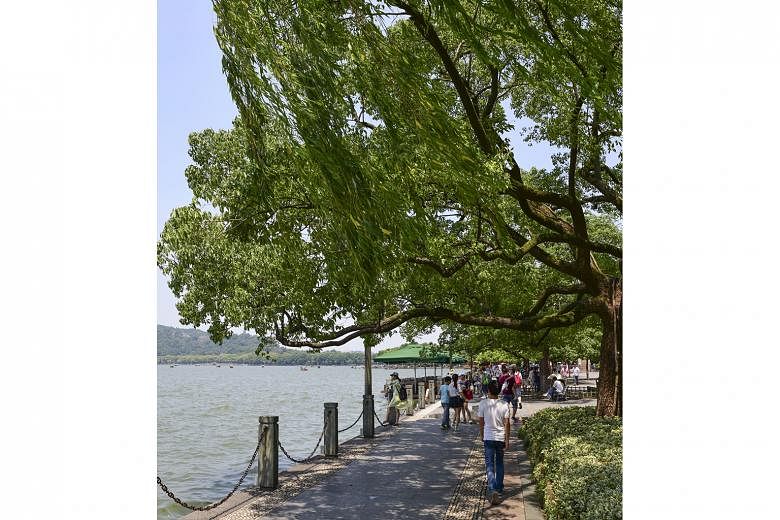With its lockdown finally ending on April 8, Wuhan, the original centre of the coronavirus pandemic, is on the path to recovery.
In time, foreign tourists will begin returning to this fascinating city in central China to savour its fiery food, admire the beauty of its lake district and delve into its history.
Here are six reasons people will rediscover Wuhan's appeal.
1 URBAN OASIS
Much as I love the frenetic energy of China's cities, I am more beguiled by its many serene parks that offer temporary refuge from the ceaseless bustle.
The country's lush and meticulously landscaped metropolitan parks, dotted with traditional Chinese architecture, are beautiful, relaxing and a step back in time.
I was walking in the shadow of skyscrapers on one of Wuhan's busiest streets, Jiefang Avenue, when I needed a break.
Zhongshan Park was right there. With its generous size, it was easy to find a secluded nook.
I sat on a bench in the shade of a large Metasequoia, a redwood that is the tree emblem of Wuhan. I watched a succession of couples pose for photos on an arched stone bridge spanning the canal that weaves through Zhongshan.
The park is so idyllic that you forget it is embedded in a city of more than eight million people.
2 FIERY CUISINE
Having lived on and off in Thailand for years, I am accustomed to spicy food and figured my palate could easily handle Wuhan's cuisine.
But as I chugged my cold beer seeking relief, I had a humbling realisation: Wuhan dry pot was too much for me.
-
COVID-19 ADVISORY
 .
. For updates on China's entry requirements, go to the website of the Embassy of China in Singapore (www.chinaembassy.org.sg/eng).
For daily updates on Covid-19 cases in China, go to the website of the World Health Organisation (str.sg/JMKD)
Influenced by the famously fiery food of the nearby Sichuan province, many dishes in Wuhan are laced with dried chillies and Sichuan peppercorns.
Even spice-loving Singaporeans could get a numbing shock, especially if they order the hot pot and the dry pot.
The latter is a version of Chinese hot pot without the broth.
I tried both styles and found them delicious but remarkably spicy, with the chillies and peppercorns infusing the tofu, mushrooms, bok choy, sliced beef and fish balls.
3 TOWERING ICON
In a city spiked by hundreds of skyscrapers, a traditional Chinese pagoda manages to stand out on the eastern side of the Yangtze River.
From 2km away, as my taxi began to cross the Wuhan Yangtze River Bridge, I could see the top of the magnificent five-tiered Yellow Crane Tower, which stands 51m tall.
Dating back more than 1,800 years, this structure is considered one of the Four Great Towers of China, along with versions in the cities of Nanchang, Yueyang and Penglai.
Perched atop Snake Hill, Yellow Crane Tower is the icon of Wuhan and has been rebuilt several times.
It started as a military watchtower, but in recent centuries has been used as a public attraction and lookout spot, which offers sprawling views of the Wuhan skyline.
Decorated by about 100,000 glazed roof tiles, the tower's eaves curl towards the sky, mimicking the appearance of a flying crane with its wings outstretched.
4 BRIDGE THAT CONQUERED YANGZTE RIVER
When I left Yellow Crane Tower, I decided to walk back over the Yangtze River to central Wuhan. This was my chance to see, up close, one of the most famous bridges in China.
Granted, the Yingwuzhou Yangtze River Bridge just to the south of it might be more spectacular - bright red and similar in appearance to San Francisco's world-famous Golden Gate Bridge.
But it cannot compete with the significance of the Wuhan Yangtze River Bridge.
When this hulking grey bridge was completed in 1957, it represented the Chinese conquest of the mighty Yangtze, Asia's longest river at 6,300km.
Up to that point, there was no such major bridge across the Yangtze. This new construction finally allowed rail and vehicle traffic to cross the river.
The lower level of the bridge hosts a railway line, while the upper deck has a highway, as well as pedestrian paths which afford fantastic views of the river and both sides of Wuhan.
5 STORY OF WUHAN
Rarely have I been so glad that it rained. Otherwise, I would not have visited the comprehensive Hubei Provincial Museum.
So enormous is this museum that if it had rained for two days straight, I would still have been occupied by its 9,000 sq m of exhibition space.
Sitting on East Lake, not far from Yellow Crane Tower, this is one of the most important Chinese museums, boasting more than 200,000 artefacts.
Among that grand haul are rare examples of jade, bronze, pottery and porcelain products excavated from archaeological sites within Hubei province. Some are more than 2,000 years old.
The museum also has troves of old weapons and musical instruments that showcase the ancient culture of Hubei.
One highlight is the collection of chime bells - enormous bronze instruments etched with Mandarin characters explaining their back story.
I left this museum with a far deeper understanding of Hubei.
6 WATERY WONDERLAND
As I wandered the paths that hug the edge of East Lake, I encountered group after group of active locals.
Some were swaying slowly to Chinese traditional music. Others were dancing with vigour to modern pop. More still were playing board games, doing taiji, kicking footballs, playing musical instruments or merely sitting and absorbing the lake's natural splendour.
East Lake is massive. About 10km wide and 10km long, it is reputedly the largest city-based lake in China.
What makes it so appealing is the huge effort put into landscaping its perimeter. Much of East Lake is surrounded by attractive gardens and parks, criss-crossed by paths and decorated by bridges, pavilions, pagodas, temples and decorative gates.
The Moshan-, Luoyan-and Donghu-designated "scenic areas" alongside the lake are especially pretty. I spent three hours wandering around East Lake, greatly charmed and entertained the whole time, and yet I explored only a tiny fraction of it.
•The writer is an Australian journalist and photographer based in Ireland and Thailand.
